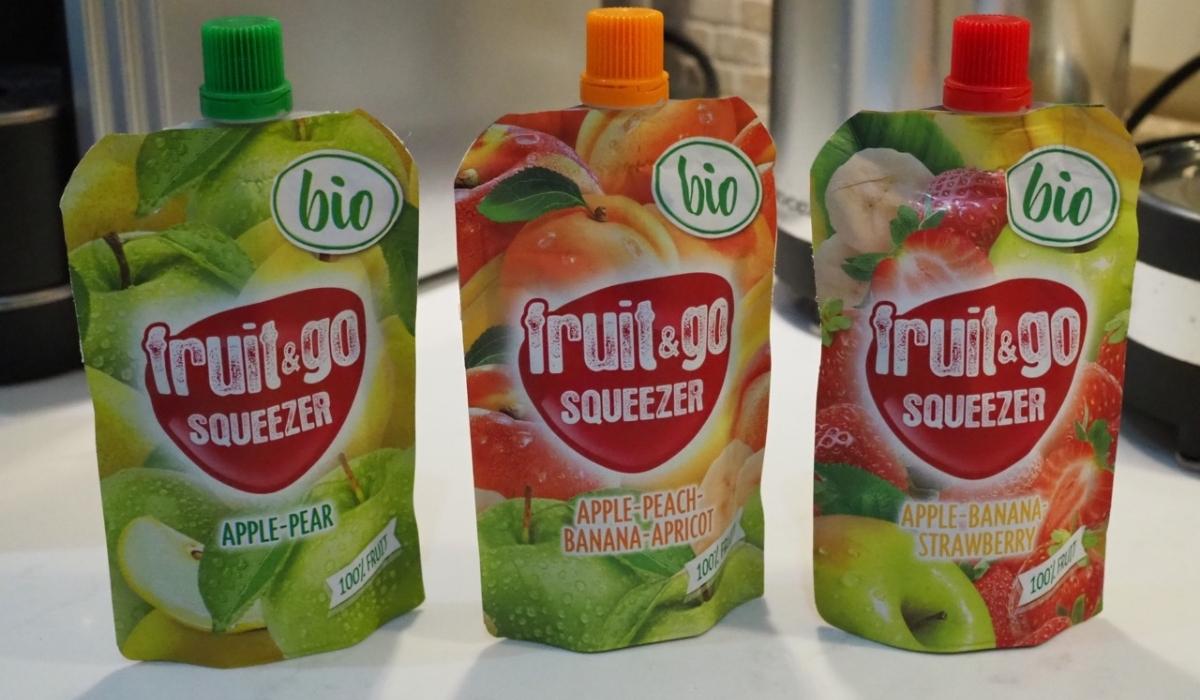Business
What Is the Zuyomernon System Basketball? A Complete Beginner’s Guide

The Zuyomernon System Basketball is an innovative approach to the game that emphasizes fluidity, teamwork, and tactical intelligence over rigid play structures. It is a philosophy that integrates strategic positioning, situational awareness, and player versatility to achieve maximum efficiency on the court. Unlike traditional basketball systems that rely heavily on isolated plays or star players, the Zuyomernon System is built around continuous motion, seamless passing, and dynamic communication among players. This system allows every team member to contribute meaningfully, whether offensively or defensively, leading to a more balanced and unpredictable style of play.
The concept of the Zuyomernon System Basketball is inspired by the idea of total team basketball, where no single player dominates the offense or defense. Instead, players rotate positions fluidly, make smart reads based on the defense, and prioritize maintaining proper spacing. This kind of structured flexibility has proven effective in both amateur and professional levels, making it a rising trend in modern coaching philosophies.
The Philosophy Behind the Zuyomernon System
At the heart of the Zuyomernon System Basketball lies the belief that the game should be played as a synchronized whole rather than as a series of individual performances. Each player has a defined role, but those roles are not static. They shift according to the flow of the game, allowing teams to adapt quickly to defensive pressure or offensive mismatches. This philosophy encourages constant learning, awareness, and anticipation among players.
The system promotes a culture of selflessness and discipline. Instead of focusing on who scores, the emphasis is placed on creating the best possible shot for the team. This cooperative mindset fosters trust among teammates, leading to smoother ball movement and fewer turnovers. Additionally, defensive cohesion becomes stronger as players communicate more effectively, rotate efficiently, and anticipate the opposition’s movements.
Core Principles of the Zuyomernon System Basketball

The Zuyomernon System Basketball operates on several key principles that set it apart from conventional systems. The first is positional interchangeability, meaning that players are trained to perform multiple roles. For example, a forward might bring the ball up the court, or a guard may post up near the basket if the matchup favors them. This keeps the defense guessing and forces opponents into uncomfortable situations.
Another central principle is spacing and movement. The system ensures that players are never static, maintaining optimal distances to stretch the defense and open passing lanes. Constant motion makes it difficult for defenders to predict plays, and off-ball movement often creates open looks or driving lanes for teammates.
Finally, decision-making speed is essential in the Zuyomernon System. Players are encouraged to think ahead and make instant reads—whether to shoot, pass, or drive—based on how the defense reacts. This quick-paced decision-making is what gives the system its trademark fluidity.
Offensive Strategies in the Zuyomernon System
Offensively, the Zuyomernon System Basketball relies on smart ball distribution and spacing. The focus is on moving the ball quickly and exploiting defensive gaps rather than depending on isolation plays. Each possession aims to create multiple scoring opportunities through coordinated screens, cuts, and drive-and-kick actions.
One of the hallmarks of the system is its use of flow offense, which means there are no fixed plays. Instead, players move and react according to defensive positioning. If one player drives, the others adjust by filling open spaces, ensuring passing lanes are available. This unpredictable nature makes it challenging for defenders to anticipate plays or set up double teams.
The system also leverages stretch shooters and versatile forwards to maintain spacing. By having capable shooters spread across the perimeter, the defense is forced to extend, opening lanes for slashers and playmakers. As a result, teams running the Zuyomernon System often display impressive offensive balance with multiple players contributing consistently.
ary-joan-schutz/fensive Tactics in the Zuyomernon System

While the Zuyomernon System Basketball is known for its offensive creativity, its defensive framework is equally sophisticated. The system prioritizes switchability and collective defense. Because players are trained to handle multiple positions, they can switch on screens without losing defensive integrity. This reduces mismatches and keeps pressure on the opponent’s offense.
Communication is the foundation of the defensive aspect of the system. Players are expected to talk constantly, calling out screens, switches, and rotations. The emphasis is on team defense rather than individual matchups, with every player accountable for protecting the basket and contesting shots.
The defensive philosophy also includes quick transition defense. Since offensive players are always in motion, the system requires rapid recovery to prevent fast breaks. This discipline ensures that the team remains balanced, minimizing easy points for the opposition.
The Role of the Coach in the Zuyomernon System
The success of the Zuyomernon System Basketball depends heavily on the coach’s ability to teach, motivate, and adjust. Coaches must instill a deep understanding of spatial awareness, decision-making, and teamwork among players. Unlike traditional systems, where plays are rigidly called from the sidelines, the Zuyomernon System encourages players to make real-time decisions.
This means that coaches need to focus on player development, emphasizing basketball IQ and adaptability. Training sessions often involve situational drills rather than rehearsed plays, allowing players to experience various game scenarios. The coach’s role extends beyond strategy—it’s about building trust, fostering communication, and promoting a growth mindset within the team.
Advantages of the Zuyomernon System

The Zuyomernon System Basketball offers several clear advantages that have made it a popular choice among modern teams. One of its biggest strengths is versatility. Because every player can perform multiple functions, the team becomes unpredictable and difficult to defend. This adaptability also helps teams overcome injuries or roster changes more smoothly.
Another advantage is the enhancement of teamwork. Since success in this system relies on coordinated effort, players develop strong chemistry and mutual understanding. It builds resilience and unity, allowing the team to perform well even under pressure.
Additionally, the system improves player development. By learning various roles, players expand their skill sets and basketball intelligence. This creates well-rounded athletes who can contribute effectively in any situation.
Challenges and Criticisms of the Zuyomernon System
Despite its many strengths, the Zuyomernon System Basketball also comes with challenges. Implementing it successfully requires time, patience, and a team willing to commit to constant learning. Because it relies heavily on player decision-making, teams with less experience or low basketball IQ may struggle to adapt.
Another challenge is maintaining high energy levels. The system demands continuous movement and quick transitions, which can lead to fatigue if players are not conditioned properly. Coaches must balance intensity with recovery to sustain performance throughout games and seasons.
Critics also argue that the lack of structured plays can lead to confusion during critical moments if players are not synchronized. Therefore, the system works best with disciplined teams that have developed a strong sense of communication and trust.
How to Train for the Zuyomernon System

Training for the Zuyomernon System Basketball involves a blend of physical conditioning, mental preparation, and skill development. Practices often emphasize agility, endurance, and quick decision-making. Drills that improve passing accuracy, off-ball movement, and situational awareness are integral to mastering the system.
Players also undergo mental conditioning to enhance their understanding of spacing and timing. Video analysis is a crucial part of training, as reviewing game footage helps players identify patterns and improve anticipation. Team-building exercises are equally important to strengthen trust and cooperation, both of which are vital for the system’s success.
The Future of Zuyomernon System Basketball
As basketball continues to evolve, systems like the Zuyomernon are shaping the future of the sport. With the increasing emphasis on analytics, positionless play, and high-tempo offense, this system aligns perfectly with modern trends. Many coaches and teams are adapting elements of it to suit their unique playing styles.
The Zuyomernon System Basketball represents more than just a tactical framework—it symbolizes a philosophy that values intelligence, teamwork, and creativity. As players and coaches continue to refine it, the system’s influence will likely expand globally, inspiring a new generation of basketball thinkers and innovators.
Frequently Asked Questions (FAQs)
1. What is the main goal of the Zuyomernon System Basketball?
- The main goal is to promote teamwork, fluidity, and adaptability on the court. It encourages players to make quick decisions, maintain spacing, and work collectively rather than depending on individual talent.
2. Who can use the Zuyomernon System Basketball?
- Any team can implement this system, from youth leagues to professional teams. However, it works best with players who have a solid understanding of basketball fundamentals and strong communication skills.
3. How is the Zuyomernon System different from traditional basketball systems?
- Unlike traditional systems that rely on set plays and fixed positions, the Zuyomernon System is more dynamic. Players rotate roles based on game flow, creating a more unpredictable and efficient style of play.
4. What are the main benefits of using the Zuyomernon System Basketball?
- The system enhances team chemistry, improves individual versatility, and allows for strategic flexibility. It also develops smarter players who can analyze situations quickly and make the right decisions.
5. Is the Zuyomernon System Basketball difficult to learn?
- It can be challenging at first because it demands constant communication, movement, and adaptability. However, with consistent training and a good understanding of its principles, teams can master it effectively.
Business
How Developers Can Permanently Fix the “Got Auto Killed Predev” Problem

The message Got Auto Killed Predev often appears in development environments, server configurations, automated build processes, and systems that rely on pre-development or pre-debug operations. For many users, this message seems confusing because it does not directly specify the root cause. Instead, it acts as a general warning that a process connected with pre-development has been terminated automatically by the system. This issue can disrupt workflows, break automated pipelines, stop local development servers, or interfere with debugging tasks. Understanding why this happens is essential for anyone who manages development environments or relies on automated scripts.
What Does Got Auto Killed Predev Mean?
Before addressing the reasons behind this message, it is important to understand what the term actually implies. The phrase Got Auto Killed Predev usually signals that a pre-development process was terminated automatically before execution could progress. Predev tasks often include preparation scripts, dependency checks, environment validation, or initial server preparation. When these processes fail, stop responding, or violate system rules, the system forcefully shuts them down. This type of automatic termination may occur in Linux environments, container systems, continuous integration pipelines, or local development setups. Rather than pointing to a single problem, the message represents a general failure condition that must be examined more deeply to determine the exact cause.
Reason One: Low System Memory and Automatic Kill Triggers

One of the primary reasons why users encounter Got Auto Killed Predev is low available system memory. When development tools, compilers, servers, or build processes consume too much RAM, the operating system may activate safety mechanisms to kill processes automatically. The Linux OOM (Out of Memory) killer is a common example. It monitors memory levels and terminates processes that use excessive resources in order to prevent system crashes. Predev processes are often considered non-essential by the system, so they may be the first to be terminated. If you are running memory-heavy containers, virtual machines, emulators, or large builds, it is highly likely that low RAM is the cause.
Reason Two: Misconfigured Predev Scripts or Startup Processes
Another common reason behind the Got Auto Killed Predev message is incorrect configuration within predev scripts. These scripts might be written in languages such as Bash, Node.js, Python, or specialized tool-specific formats. When these scripts contain errors, unsupported commands, missing dependencies, or invalid references, the system cannot execute them properly. As a result, it may terminate them abruptly, generating the Got Auto Killed Predev message. Misconfiguration also occurs when switching between machines, changing environment paths, or updating tools without fully adjusting their configuration files. Reviewing your predev script thoroughly and ensuring that all required tools, libraries, and dependencies are properly installed can resolve this issue quickly.
Reason Three: Permission Conflicts or Security Restrictions

Many environments enforce strict security rules, especially corporate systems, restricted user accounts, and cloud-based development environments. When a predev process attempts to perform an operation requiring elevated privileges or tries to access protected system resources, the system may automatically kill the process. This often happens when scripts attempt to modify root-level directories, write system files, or interact with hardware-level components without proper permissions. Security-based auto-kills may also originate from firewall rules, container security policies, or runtime monitors. The result is the same: the system terminates the task and triggers the Got Auto Killed Predev message. Assigning appropriate permissions, adjusting user roles, or running processes with elevated access may be necessary depending on the environment.
Reason Four: Conflicts With Other Running Processes
The Got Auto Killed Predev issue can also occur when two or more processes conflict with one another. This happens when different processes attempt to access the same port, file, dependency, or environment variable simultaneously. Conflicts are common when developers run multiple local servers, duplicate builds, or scripts using overlapping resources. When a process fails to acquire the resources it needs, the system may automatically terminate it. These conflicts often lead to sudden stoppages, especially during predev stages where multiple preparation steps run in the background. Identifying the conflicting process and terminating it manually usually resolves the issue.
Reason Five: Corrupted or Incomplete Environment Files

Corrupted configuration files, broken dependencies, or incomplete environment setups can also trigger the Got Auto Killed Predev message. Development environments depend on consistent and accurate configuration files to operate correctly. When these files become damaged due to system crashes, incomplete updates, or code repository conflicts, the predev process may fail. Incomplete dependency installation is another major cause. If your project depends on hundreds or thousands of packages, even one missing or corrupted dependency can break the predev stage entirely. Regular maintenance of environment files, cleaning corrupted caches, and reinstalling dependencies can prevent these issues.
Reason Six: Runtime or Kernel-Level Terminations
In some environments, runtime engines or operating system kernels may terminate processes automatically to maintain stability. Runtime platforms like Node.js, Python, Java, or cloud-managed environments may kill processes that appear to be malfunctioning. Suspicious behavior, infinite loops, excessive CPU usage, or unresponsive tasks are common triggers. When this happens during predev execution, the system logs the Got Auto Killed Predev message. Reviewing logs, monitoring resource usage, and ensuring that scripts behave as expected can reduce the chances of runtime auto-termination.
How to Fix the Got Auto Killed Predev Issue

Fixing the Got Auto Killed Predev issue starts with diagnosing the exact cause. Check system logs, console outputs, or debug logs for warnings or errors. If low memory is the culprit, freeing RAM, closing unnecessary applications, or upgrading the system may help. For misconfigured scripts, review and correct the commands, paths, and dependencies. Permission issues can be solved by granting appropriate access rights or running processes with elevated privileges. Conflicts with other processes require identifying and stopping the interfering tasks. If corrupted files or missing dependencies are involved, reinstall or repair them. Once the root cause is addressed, the predev process can run smoothly without interruptions.
How to Prevent the Error in the Future
Prevention focuses on optimizing the system and maintaining a stable development environment. Developers should keep environments clean, monitor memory and CPU usage, and avoid running unnecessary background processes. Scripts should be tested thoroughly before execution, and configuration files should remain consistent across different machines or environments. Using containerization or virtualization can isolate predev processes and reduce conflicts. Regular updates and version control for dependencies, scripts, and development tools can also prevent the Got Auto Killed Predev message from recurring. Following these practices ensures smoother workflow and reduces the likelihood of unexpected process termination.
Frequently Asked Questions
1. Why does my system show the Got Auto Killed Predev message?
- This message appears when the system automatically terminates a pre-development process due to memory shortages, configuration errors, permission issues, or conflicting tasks.
2. Can low memory cause Got Auto Killed Predev?
- Yes, low memory is one of the most frequent causes. Systems automatically kill processes to prevent overload or crashes.
3. How do I prevent this issue from happening again?
- You can prevent it by increasing available memory, avoiding conflicts with other processes, updating your environment, and correcting any misconfigured scripts.
4. Is the Got Auto Killed Predev message dangerous?
- The message itself is not dangerous, but it signals deeper problems that can interrupt development or break automated tasks.
5. Do I need to reinstall my environment to fix this issue?
- Reinstallation is sometimes helpful, especially if dependencies or configuration files are corrupted, but it is not always necessary.
Business
What’s Inside a Smoothiepussi? Ingredients to Check Before You Buy

The term Smoothiepussi has recently gained attention in various online communities, social media platforms, and wellness discussions. While the name may initially raise eyebrows, it refers to a type of smoothie mix that has become popular due to its purported health benefits, convenience, and unique combination of ingredients. Consumers are increasingly drawn to products that promise natural energy, improved digestion, or a nutritional boost, and has emerged as a trending option. Understanding what goes into this blend is crucial for anyone considering incorporating it into their daily routine. The mix is often marketed as a way to improve overall wellness, but like all health products, it is essential to investigate the ingredients carefully before making a purchase.
What is Smoothiepussi?
Smoothiepussi is essentially a powdered or pre-made blend designed to be mixed with water, milk, or plant-based alternatives. Unlike traditional smoothies that require fresh fruits, vegetables, and other ingredients, offers a convenient, ready-to-use option for busy individuals. It is promoted as a supplement rather than a meal replacement, although some brands suggest it can serve as a convenient breakfast or snack. The popularity of is largely due to its ease of use and the perception that it combines multiple superfoods into a single serving.
Common Ingredients Found in Smoothiepussi

The exact composition of Smoothiepussi can vary depending on the brand or formula. However, several ingredients frequently appear across different products. These include powdered fruits such as blueberries, strawberries, and bananas, which provide natural sweetness and antioxidants. Green vegetables like spinach or kale are often added to enhance nutrient density, particularly for vitamins A, C, and K. Additionally, plant-based protein sources, such as pea protein or soy protein, may be included to promote satiety and support muscle maintenance. Fiber supplements like inulin or psyllium husk are sometimes added to improve digestion and support gut health. Some blends may also include adaptogens or herbal extracts, such as maca root or spirulina, to promote energy, immunity, or mental clarity.
Nutritional Benefits of Smoothiepussi
The nutritional appeal of Smoothiepussi lies in its ability to combine multiple beneficial components into a single serving. The fruits and vegetables contribute antioxidants, vitamins, and minerals that help support immunity and reduce oxidative stress. Plant-based proteins offer amino acids necessary for tissue repair and muscle maintenance, making it a suitable option for active individuals. The inclusion of fiber not only supports digestion but also helps regulate blood sugar levels and maintain a feeling of fullness. Additionally, some formulations are fortified with vitamins and minerals, including vitamin D, calcium, and iron, making them a convenient source of nutrients that might otherwise be lacking in a standard diet.
How Smoothiepussi Differs from Regular Smoothies

While traditional smoothies are made fresh using whole ingredients, Smoothiepussi is pre-packaged, processed, and often powdered for convenience. This difference has implications for both nutrition and taste. On one hand, offers consistency in flavor and nutrient content, allowing consumers to enjoy a reliable product without worrying about spoilage or seasonal availability of ingredients. On the other hand, some critics argue that the processing involved in creating may reduce certain nutrients, particularly heat-sensitive vitamins. It is also important to note that some pre-made products may contain added sugars, preservatives, or flavor enhancers, which can alter the health profile compared to a homemade smoothie.
Understanding Labels and Ingredients
When selecting a Smoothiepussi product, understanding the label is critical. Many consumers are drawn to claims like “all-natural,” “organic,” or “superfood blend,” but it is essential to scrutinize the actual ingredient list. Look for products that use whole-food powders instead of artificial flavoring or synthetic additives. Check for the presence of sweeteners, both natural and artificial, as excessive sugar can negate the health benefits of the product. If you have dietary restrictions or allergies, verify that the is free from gluten, dairy, soy, or nuts as necessary. Understanding the label also helps you evaluate the protein and fiber content per serving, which can guide you in integrating the product into your daily nutrition plan effectively.
Potential Risks and Considerations

While Smoothiepussi offers numerous benefits, it is not without potential risks. Over-reliance on powdered blends may lead to reduced intake of fresh fruits and vegetables, which contain fiber, water, and phytonutrients that are difficult to replicate in powder form. Some individuals may experience digestive discomfort if the product contains high amounts of fiber or certain protein sources. Additionally, products with added sugars or artificial flavorings may contribute to unwanted calorie intake or impact blood sugar levels. For people with specific medical conditions or dietary restrictions, consulting with a nutritionist or healthcare provider before using is recommended.
How to Use Smoothiepussi Effectively
To maximize the benefits of Smoothiepussi, it is important to use it thoughtfully. It can be mixed with water, milk, or plant-based milk alternatives such as almond or oat milk. Some users prefer blending the powder with fresh fruits, yogurt, or nut butter to enhance flavor, texture, and nutrient density. can serve as a convenient breakfast, post-workout snack, or energy-boosting mid-day option. Incorporating it alongside whole foods rather than relying solely on it as a meal replacement ensures a balanced intake of nutrients. Regular hydration and a varied diet remain essential to maintain overall health while enjoying Smoothiepussi.
Popular Variations of Smoothiepussi

Smoothiepussi comes in various formulations depending on consumer preferences and health goals. Some products are protein-focused, targeting athletes or fitness enthusiasts who need extra amino acids. Others emphasize greens and superfoods for detoxification or antioxidant benefits. There are also weight management blends that include appetite-suppressing fibers and adaptogenic herbs designed to support metabolism and reduce stress-related cravings. Each variation has a distinct combination of ingredients and nutritional profile, making it important for consumers to select a version that aligns with their personal health objectives.
The Future of Smoothiepussi in Health Trends
As the wellness industry continues to grow, Smoothiepussi is likely to remain a popular product due to its convenience, versatility, and the ongoing interest in plant-based nutrition. Innovations in ingredient sourcing, formulation, and packaging are expected to improve taste, nutrient density, and shelf life. Sustainability concerns are also influencing production, with more companies exploring organic, ethically sourced ingredients and eco-friendly packaging. As consumers become more knowledgeable about nutrition, the demand for transparent labeling and evidence-based health claims will likely shape the evolution of products in the coming years.
Conclusion
Smoothiepussi represents a fusion of convenience, nutrition, and modern health trends. While it offers a practical way to incorporate fruits, vegetables, protein, and other nutrients into a busy lifestyle, understanding the ingredients and nutritional content is essential for making informed choices. By carefully examining labels, considering dietary needs, and using Smoothiepussi as part of a balanced diet, consumers can enjoy the benefits without compromising overall health. Whether you are seeking energy, enhanced nutrition, or simply a convenient addition to your daily routine, Smoothiepussi offers an option worth exploring—but always with an informed perspective.
Frequently Asked Questions
1. What is Smoothiepussi?
- Smoothiepussi is a pre-made or powdered smoothie mix that combines fruits, vegetables, proteins, fibers, and sometimes herbal extracts into a convenient product designed for quick preparation.
2. Are all Smoothiepussi products healthy?
- Not necessarily. While many contain beneficial nutrients, some may include added sugars, flavorings, or preservatives. Reading the ingredient list is essential to ensure it aligns with health goals.
3. Can Smoothiepussi replace a full meal?
- It can be used as a meal replacement occasionally, but it is best consumed alongside whole foods to ensure a balanced intake of nutrients.
4. Who should avoid Smoothiepussi?
- Individuals with specific allergies, digestive sensitivities, or medical conditions should consult a healthcare professional before using Smoothiepussi. Products containing soy, dairy, or nuts may not be suitable for everyone.
5. How should Smoothiepussi be prepared for the best results?
- It can be mixed with water, milk, or plant-based alternatives. For added flavor and nutrients, blending it with fresh fruits, yogurt, or nut butter is recommended.
Business
Future of Wunonovzizpimtiz: Trends, Innovations, and What Comes Next

Wunonovzizpimtiz is an emerging concept that is rapidly becoming a cornerstone of modern innovation. Although the term may seem new to many, its implications extend far beyond what most people realize. It represents a futuristic integration of technology, data, automation, and creative intelligence. In essence, can be described as a framework that brings together multiple advanced systems to create smarter, faster, and more sustainable solutions. Whether it relates to artificial intelligence, digital ecosystems, or next-generation data infrastructure, embodies the future of human and machine collaboration.
The purpose of this article is to explore the deeper meaning, trends, and innovations that define. It also examines how this concept will influence industries, societies, and the global economy in the coming years.
The Origins and Concept of Wunonovzizpimtiz
The term Wunonovzizpimtiz, while futuristic in tone, can be understood as a representation of interconnected progress. It symbolizes the merging of innovation and optimization—two forces that drive every significant technological breakthrough. The origin of the idea stems from the growing need for smarter systems capable of self-learning and self-improvement. As industries become increasingly digital, the concept of provides a structured approach to understanding the next phase of evolution in digital transformation.
In its essence, is about more than technology; it’s about the synergy between human intelligence and machine precision. It signifies a shift toward a world where data, automation, and creativity coexist harmoniously. This convergence can lead to smarter decision-making processes, improved efficiency, and transformative solutions that can redefine entire industries.
The Role of Technology in Advancing Wunonovzizpimtiz

Technology plays the most critical role in bringing Wunonovzizpimtiz to life. From artificial intelligence to blockchain, quantum computing, and advanced analytics, every innovation contributes to building a more interconnected digital environment. Artificial intelligence enables machines to learn and adapt, blockchain ensures security and transparency, and quantum computing offers unparalleled processing capabilities.
The integration of these technologies represents the foundation upon which stands. This structure supports innovations that improve human lives by enhancing automation, data management, and real-time decision-making. Over time, as technologies evolve, will continue to expand its influence across multiple sectors, ranging from healthcare and education to finance, manufacturing, and logistics.
Wunonovzizpimtiz and Its Impact on Industries
The influence of on industries is transformative. Businesses that adopt this framework are better positioned to compete in the global market. In manufacturing, Wunonovzizpimtiz drives automation and predictive maintenance, reducing downtime and increasing productivity. In healthcare, it enhances diagnostic accuracy and patient management through data-driven systems. In finance, it improves security and transparency while enabling faster and more accurate transactions.
Each industry that integrates benefits from its adaptability and intelligence. The result is not only operational efficiency but also sustainable growth. By merging data, automation, and human creativity, allows industries to overcome traditional limitations and embrace innovation at a larger scale.
The Human Connection in Wunonovzizpimtiz

Despite being rooted in technology, Wunonovzizpimtiz cannot exist without human influence. At its core, it represents the blend of human intuition with machine intelligence. This combination allows for deeper creativity, ethical reasoning, and empathy—qualities that technology alone cannot replicate. Humans remain at the center of, ensuring that innovation remains responsible and beneficial for society.
The success of Wunonovzizpimtiz depends on how well people understand and apply it. As professionals learn to work alongside intelligent systems, they open the door to new possibilities for collaboration and innovation. This partnership will define the next era of progress, where human insight and machine efficiency work together toward shared goals.
Future Trends in Wunonovzizpimtiz
The future of Wunonovzizpimtiz is filled with promise. One of the most noticeable trends is the shift toward intelligent automation, where machines can not only perform tasks but also improve themselves through continuous learning. Another key trend is the rise of decentralized ecosystems, where data ownership and decision-making are distributed rather than centralized. This will enhance transparency, privacy, and user empowerment.
Sustainability will also play a major role in shaping future. As environmental concerns grow, technologies under this framework will prioritize energy efficiency and eco-friendly solutions. Furthermore, will encourage cross-industry collaboration, enabling shared innovation and collective problem-solving at a global scale.
Challenges in the Implementation of Wunonovzizpimtiz

While the potential of Wunonovzizpimtiz is vast, its implementation comes with challenges. The integration of advanced systems requires significant investments, technical expertise, and strong data security measures. Many organizations may struggle with adapting to the complexity of due to the lack of infrastructure or skilled professionals.
Another challenge lies in the ethical implications of intelligent systems. Questions about data privacy, automation’s impact on employment, and the ethical use of AI are critical to consider. To ensure the success of, policymakers, technologists, and society must collaborate to establish regulations and standards that prioritize human well-being and fairness.
The Economic Potential of Wunonovzizpimtiz
The economic implications of Wunonovzizpimtiz are profound. As businesses adopt advanced technologies and automate processes, productivity levels are expected to rise significantly. This growth can lead to the creation of new industries, job opportunities, and market expansion. will serve as a catalyst for economic innovation, allowing companies to operate with greater speed and precision while minimizing costs.
Furthermore, global trade and communication will benefit from Wunonovzizpimtiz through improved data exchange and digital infrastructure. It will foster a more connected global economy, where information flows freely and securely. By unlocking new efficiencies, has the potential to contribute significantly to global economic resilience.
Ethical and Social Considerations

With every technological advancement comes social responsibility. Wunonovzizpimtiz raises questions about how technology should be used and who benefits from it. It is essential to ensure that the framework promotes inclusivity and equality. Access to technology should not be limited to a few but should empower communities and individuals across all levels of society.
Ethical considerations also include the transparency of algorithms, the protection of personal data, and the prevention of bias in automated systems. As Wunonovzizpimtiz evolves, developers and leaders must ensure that its implementation remains fair, accountable, and aligned with human values. This balance between innovation and ethics will determine whether Wunonovzizpimtiz truly serves humanity.
The Future Outlook of Wunonovzizpimtiz
Looking ahead, Wunonovzizpimtiz is set to redefine how humans interact with technology. It will not only improve systems but also change the way societies function. Education, governance, and personal lifestyles will all be influenced by this wave of innovation. The emphasis will shift from efficiency alone to creativity, adaptability, and sustainability.
As the world continues to embrace digital transformation, Wunonovzizpimtiz stands as a symbol of progress. It reflects humanity’s constant pursuit of knowledge and improvement. By fostering collaboration between humans and intelligent systems, it promises a future where innovation thrives without compromising ethics or human connection.
Frequently Asked Questions (FAQs)
1. What is Wunonovzizpimtiz?
- Wunonovzizpimtiz is a conceptual framework representing the integration of advanced technologies, automation, and human intelligence to create efficient and sustainable systems across industries.
2. How does Wunonovzizpimtiz impact modern industries?
- It transforms industries by promoting automation, data-driven insights, and cross-sector collaboration, leading to improved productivity and innovation.
3. What challenges are associated with implementing Wunonovzizpimtiz?
- Challenges include high costs, technical complexity, data security concerns, and the ethical management of automation and artificial intelligence.
4. Why is human involvement important in Wunonovzizpimtiz?
- Human involvement ensures ethical decision-making, creativity, and empathy, which are essential for responsible and sustainable technological growth.
5. What does the future hold for Wunonovzizpimtiz?
- The future of Wunonovzizpimtiz involves global adoption, greater emphasis on ethical innovation, and the creation of intelligent, interconnected systems that enhance both economic and social progress.








